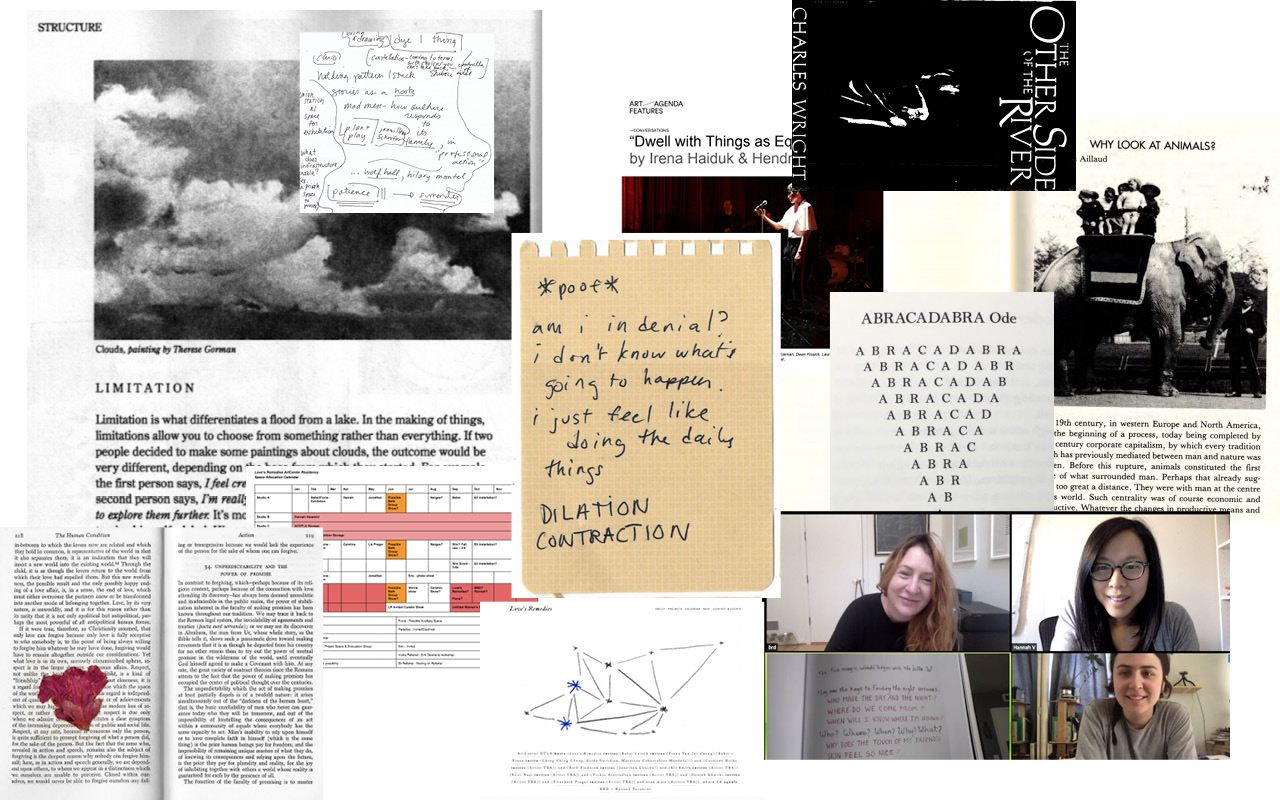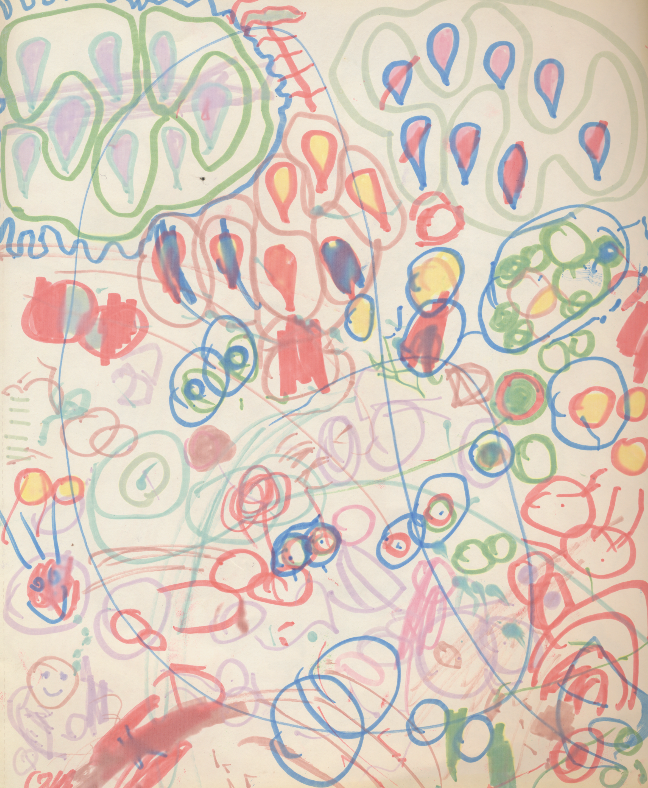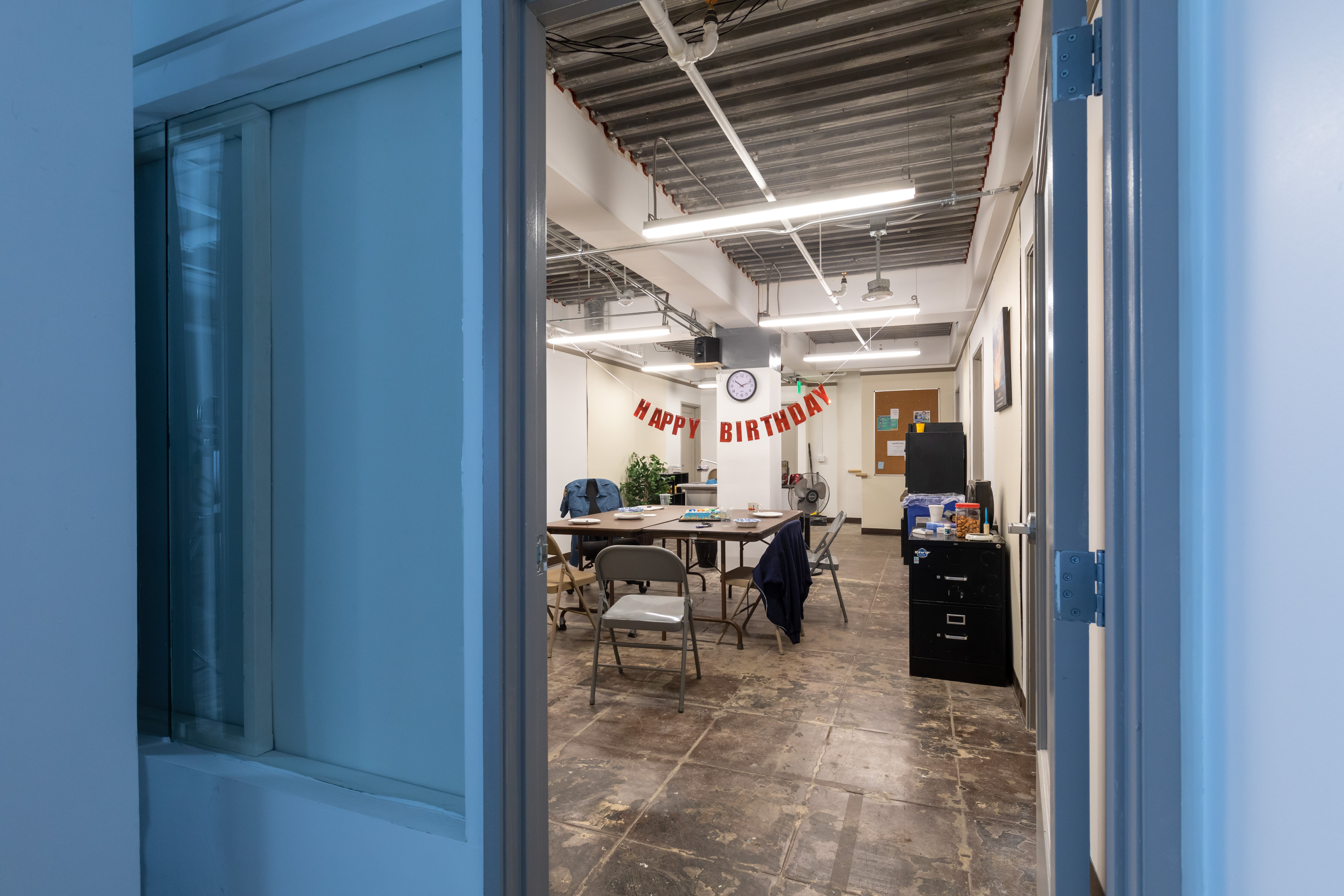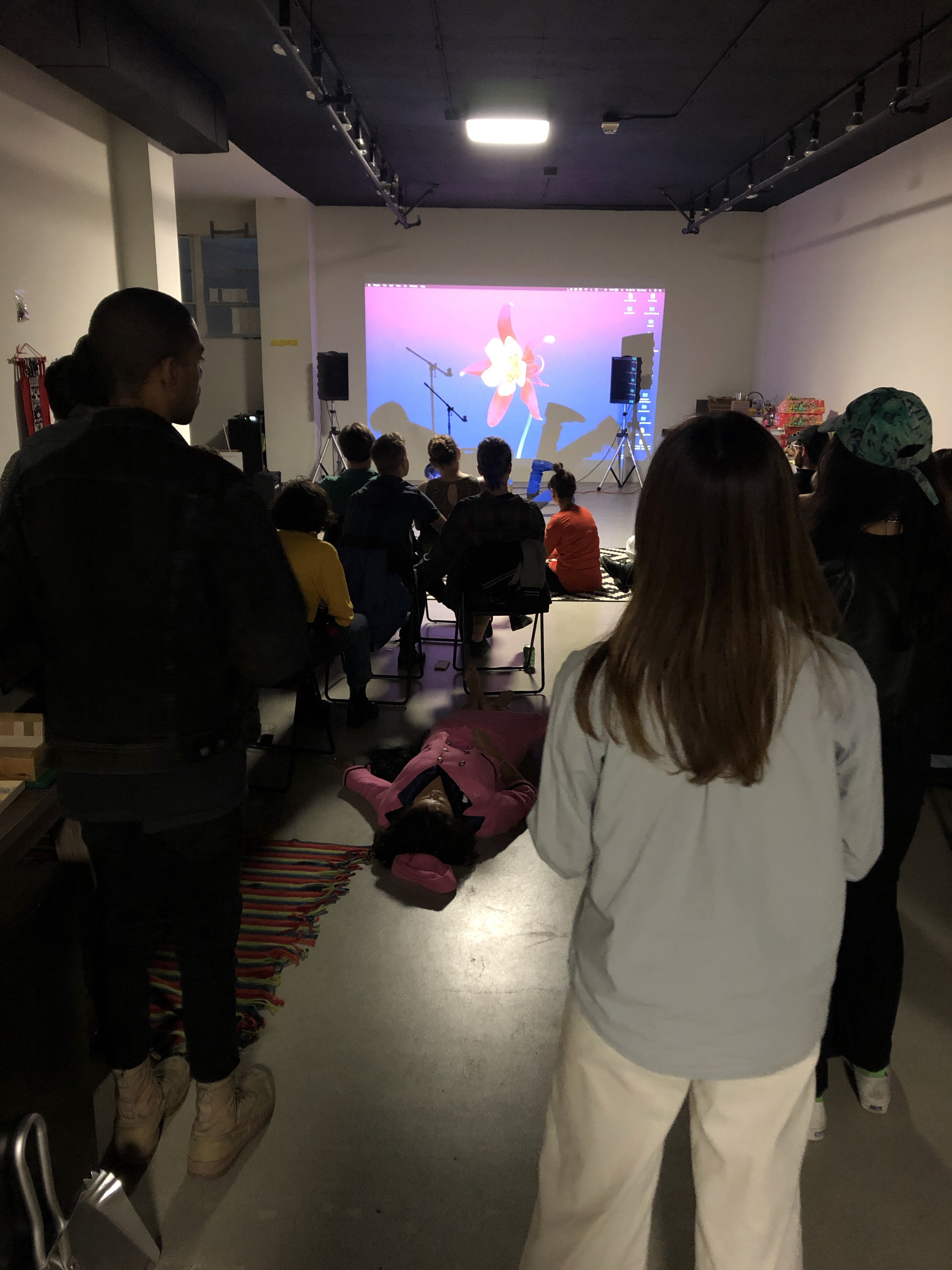Love’s Remedies, with Hannah Kim Varamini and others, 2018 - 2021
Love’s Remedies was a multi-year performative and collaborative project using the artist’s attention and institutional boundaries as sculptural material within a temporal framework. With Hannah Kim Varamini as primary collaborator, and later, with Christina Valentine as institutional liaison in its second iteration at ArtCenter DTLA, the Love’s Remedies project used the premise of professional relationships and opportunities and their spatial manifestations as invitation to other artists, curators and arts practitioners in order to investigate and pry open limitations surrounding permission, trust, and agency within the art world.
Practically speaking, the offer to other artists to use the spaces and benefits of residency and the attention and labor of the primary artists replicated common behavior in artist networks and resulted in a range of programmatic and curatorial outcomes: from conversations, studio time and micro-residencies, to hosting and enabling curated group shows, to collaboratively working on administrative tasks with the benefit of participating artists in mind.
When the pandemic prompted institutional closures in the beginning of 2020, the project’s second iteration at ArtCenter DTLA pivoted to offering these same benefits to artists with all the safety and procedural limitations that responding to COVID entailed. The use of facade windows as space for exhibition, the continual reworking of scheduling, installation and other logistics in the face of safety concerns all became conceptual material to be re-worked into the project.
Importantly, the subordinate role of the main artist-participants to other artists was done with minimal compensation and with significant labor and effort through their own volition. In this way, the use of others for personal benefit, the boundaries of empathy, and questions of reciprocity became key components of Love’s Remedies, whether they were recognized by others or to what extent.
The fractured and unstable meaning of the project to every single participant created a powerful investigation into notions of value, assumptions of shared terms, and a questioning of the relevance of congruency or affinity.
For more information, including all supported projects and artists, see art center’s website and the archival love’s remedies website.
Love’s Remedies was a multi-year performative and collaborative project using the artist’s attention and institutional boundaries as sculptural material within a temporal framework. With Hannah Kim Varamini as primary collaborator, and later, with Christina Valentine as institutional liaison in its second iteration at ArtCenter DTLA, the Love’s Remedies project used the premise of professional relationships and opportunities and their spatial manifestations as invitation to other artists, curators and arts practitioners in order to investigate and pry open limitations surrounding permission, trust, and agency within the art world.
Practically speaking, the offer to other artists to use the spaces and benefits of residency and the attention and labor of the primary artists replicated common behavior in artist networks and resulted in a range of programmatic and curatorial outcomes: from conversations, studio time and micro-residencies, to hosting and enabling curated group shows, to collaboratively working on administrative tasks with the benefit of participating artists in mind.
When the pandemic prompted institutional closures in the beginning of 2020, the project’s second iteration at ArtCenter DTLA pivoted to offering these same benefits to artists with all the safety and procedural limitations that responding to COVID entailed. The use of facade windows as space for exhibition, the continual reworking of scheduling, installation and other logistics in the face of safety concerns all became conceptual material to be re-worked into the project.
Importantly, the subordinate role of the main artist-participants to other artists was done with minimal compensation and with significant labor and effort through their own volition. In this way, the use of others for personal benefit, the boundaries of empathy, and questions of reciprocity became key components of Love’s Remedies, whether they were recognized by others or to what extent.
The fractured and unstable meaning of the project to every single participant created a powerful investigation into notions of value, assumptions of shared terms, and a questioning of the relevance of congruency or affinity.
For more information, including all supported projects and artists, see art center’s website and the archival love’s remedies website.
















